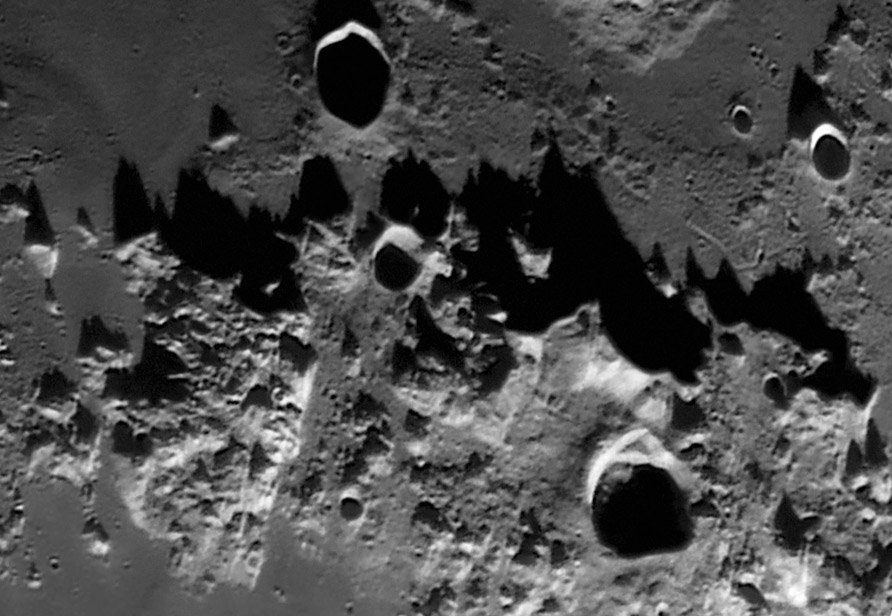
image by Paolo R. Lazzarotti, Massa, Italy.
Perhaps I’m lazy, but there are more wonderful views within Paolo’s larger mosaic that yesterday’s LPOD came from. In particular, the long blunted triangular shadows cast by the front peaks of the Caucasus Mountains are both dramatic and instructive. But first - orientation. I rotated the image so that the peaks and their shadows line up across the image. Calippus is the big (diameter 33 km) crater to the bottom right, Theaetetus (25 km) is shadow-filled at upper center, and north is to the right. Unlike the Apennines there are no individually named peaks in the Caucasus, but Neisen and other 19th century observers gave Greek letter designations to many of the peaks. Caucasus Alpha is the massive curved peak just west of Calippus. This looks like it is the remaining rim of a Calippus-size crater whose west half stayed put (and was later covered by lavas) when the east side was uplifted with the Caucasus. Neison says that Alpha rises 19,000 ft (5.8 km) above the mare, but LAC 25 from 1966 says its only 3.65 km tall. Back to the serrated shadows - they show that the Caucasus is not a smooth line of peaks but that they periodically vary in height and some are set back - staggered - from the front. As with yesterday’s speculation on the Straits of Fresnel, it appears that there has been considerable movement of large masses of land here.
Technical Details:
24 April 2007, 19:22-26UT. Gladius CF-315 Lazzarotti telescope (f/25), Lumenera Infinity 2-1M camera, Edmund Optics R filter, 140-170 frames stacked out of 2000.
Related Links:
Rükl plate 13
Paolo’s website
The amazing telescope that creates these images
COMMENTS?
Click on this icon File:PostIcon.jpg at the upper right to post a comment.



